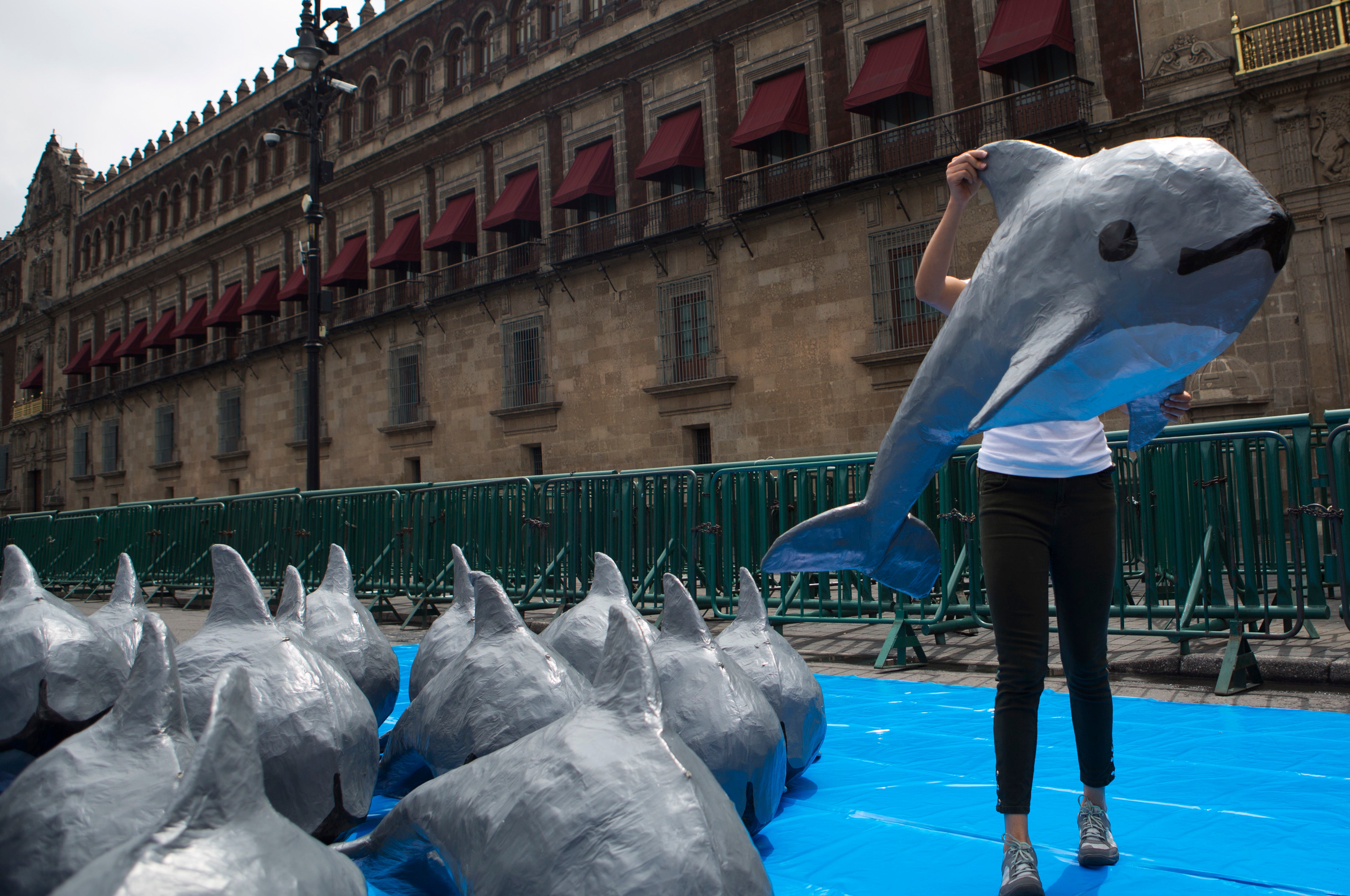Mexico abandons fishing-free zone for endangered porpoise
The Mexican government has officially abandoned the policy of maintaining a fishing-free zone around the last ten or so remaining vaquita marina

Your support helps us to tell the story
From reproductive rights to climate change to Big Tech, The Independent is on the ground when the story is developing. Whether it's investigating the financials of Elon Musk's pro-Trump PAC or producing our latest documentary, 'The A Word', which shines a light on the American women fighting for reproductive rights, we know how important it is to parse out the facts from the messaging.
At such a critical moment in US history, we need reporters on the ground. Your donation allows us to keep sending journalists to speak to both sides of the story.
The Independent is trusted by Americans across the entire political spectrum. And unlike many other quality news outlets, we choose not to lock Americans out of our reporting and analysis with paywalls. We believe quality journalism should be available to everyone, paid for by those who can afford it.
Your support makes all the difference.The Mexican government officially abandoned the policy of maintaining a fishing-free zone around the last 10 or so remaining vaquita marina.
The measure announced Wednesday replaces the fishing-free “zero tolerance” zone in the upper Gulf of California with a sliding scale of punishments if more than 60 boats are seen in the area on multiple occasions.
Given that Mexico has been unable to enforce the current restrictions — which bans boats in the small area — the sliding-scale punishments also seem doomed to irrelevance.
Environmental experts say the move essentially abandons the world’s most endangered marine mammal to the gill nets that trap and drown them. The nets are set for totoaba, a fish whose swim bladder is a delicacy in China and sells for thousands of dollars per pound (kilogram).
Alex Olivera, the Mexico representative for the Center for Biological Diversity said the rules establish a sliding scale of responses to a situation that shouldn't be allowed to occur in the first place. For example, the Agriculture and Fisheries Department says it will use 60% of its enforcement personnel if 20 fishing boats or less are seen in the restricted area.
“This is stupid. They are waiting to count boats in an area designated as 'zero tolerance,' where there shouldn't be a single boat," Olivera said. “They are letting in dozens of boats.”
“This is the end of the concept of zero tolerance,” Olivera said. “There is just going to be dissuasion.”
One conservation expert who is familiar with the case, but who cannot be quoted by name for fear of repercussions, said the new rules “imply not protecting the vaquita.”
“It appears that fisheries authorities want to drive the vaquita to extinction,” the expert said.
Two ships from the conservationist group Sea Shepherd have worked with Mexican marines to try to grab banned fishing nets from the area, but they are frequently outnumbered and attacked by fishermen, who have no fear at all of the marines.
In January, two fishermen rammed their small boat into a larger vessel used by Sea Shepherd to haul out nets. Sea Shepherd said its vessel, the Farley Mowat, was pulling illegal gill nets out of the waters of the gulf, also known as the Sea of Cortez, when people on a group of about a half dozen small, open fishing boats began tossing gasoline bombs at the vessel, setting the bow and another part of the ship afire.
The nets confiscated by Sea Shepherd vessels are expensive, so fishermen often harass the conservationists’ boats to try to get them back. The fishermen claim they have not received compensation from the Mexican government for lost fishing income. Groups representing fishermen were not immediately available to comment.
The upper Gulf of California is the only place the vaquita lives.
Mexico’s Environment Department had previously said the drop in the number of vaquitas and the area where they have been seen in recent years justified reducing the protection zone, which in theory once covered most of the upper Gulf.
Formally known as the vaquita “reserve,” that zone starts around the Colorado river delta and extends south past the fishing town of San Felipe and near Puerto Peñasco.
But as vaquita numbers dwindled to a few dozen, and then to less than a dozen, scientists and environmentalists decided to make a last-ditch stand in the ‘zero tolerance’ zone, a far smaller area where the last vaquita were seen.
Their numbers are confirmed by subaquatic listening devices that graph the squeaks and squeals the animals make, even as visual sighting become rare.